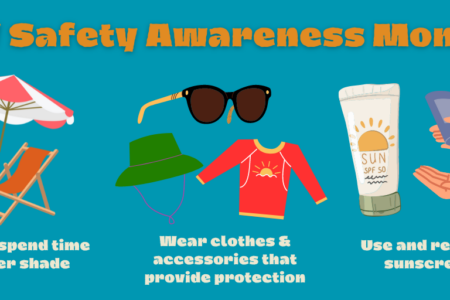
Share On Social!
As technology has evolved, so has the way we receive, view, and disseminate information.
With the invention of the smart phone and devices like tablets, access to the outside world can be done with the touch of a button.
But, as convenient as it is to unlock a phone and type something into the search engine or open an app is, we can’t help but wonder what kind of effect staring at a screen for hours on end is having on our health?
The average American between the ages of 16 and 64 spends over seven hours a day online, according to an article by AllConnect.
This amount of time is well over the two-hour recommended screen time for adults.
Screen Time by the Numbers
65.7% of the world population is online. During the third quarter of 2023, people spent an average of 6 hours and 40 minutes online, according to AllConnect.
Age plays an important role in how much time someone is online.
Women between ages 16 and 24 spend the most time online, averaging 7 hours and 32 minutes, followed by men between ages 25 and 34 at 7 hours and 13 minutes, according to Data Reportal’s 2024 global report.
Those that spend the least amount of time online are people ages 55 to 64, with women averaging 5 hours and 17 minutes and men averaging 5 hours and 14 minutes online.
When it comes to screen usage, people around the world spend more than 40% of their waking hours looking at screens.
Children are some of the most frequent screen users.
Those ages 8 to 10 are glued into screens for entertainment uses for 6 hours a day (including 4 hours watching TV, according to the Centers for Disease Control and Prevention.
Yet it’s far less than the screen time for children ages 11 to 14, who spend 9 hours a day at a screen (including 6 hours spent in front of a TV).
The recommended screen time for children between ages 2 and 12 is one hour a day and teens is two hours a day, according to the Mayo Clinic.
Assessing Screen Time in America
Compared to the rest of the world, Americans fall into the middle tier of screen usage.

For example, South Africans averaging 9 hours and 24 minutes online, while the Japanese population averages 3 hours and 56 minutes online, AllConnect reported.
One of the biggest contributors to the rise in screen time in Americans was the COVID-19 pandemic.
When the world shut down, many were forced to stay indoors and work, or go to school at a distance.
This led to a 60% increase in screen time for American adults at an average of 13 hours a day.
During the pandemic, screen use in children increased by two hours and has persisted past the COVID-19 era.
Latinos, 98% of whom own a smartphone, were particularly susceptible to the COVID-related increase in screen time because they are among the highest-percentage of users using popular social media applications such as Facebook, Instagram, Tik Tok, and WhatsApp.
“Hispanics spent almost two more hours per week watching videos, streaming audio and social networking on their smartphones during COVID-19, as a way to bridge the social distancing gap,” according to the Nielson Company.
Screen Time and Health Impacts
The increase in screen time following the pandemic is just cause for concern.
Prolonged time in front of a screen can lead to trouble sleeping, mood changes, and alterations to the brain, according to the National Institute of Drug Abuse.
Staring at a bright screen at night can reduce the release of melatonin, which is the hormone your brain produces when exposed to darkness and helps with sleep.
Too much time in front of a screen can affect your mental and emotional health, especially if you’re young.
For children, excessive screen time can cause developmental issues that can result in social-emotional developmental problems, increased anxiety, impaired emotional comprehension, and decreased social and emotional competence, according to AllConnect.
While most of the screen usage is entertainment related, some of the screen time is devoted to social media, which comes with its own set of health hazards.
Social media can have a large effect on mental health.
Heavy social media use can also impact other negative factors such as cyberbullying, low self-esteem, and social isolation.
How Can We Limit Our Screen Time?
While relying on our screens has slipped into our social consciousness, a few changes to habits can cut down on the harmful effects of increased screen use.
One way you can hold yourself accountable is by monitoring your screen usage.
Many smartphones are equipped with a feature that allows you to track how much time you spend on your device and can even tell what applications you spend most of your time on.
A good rule of thumb when avoiding screen time is not to fall back on common habits like reaching for your phone when you are bored, distracted, or stressed.
Other methods for cutting back on screen time include making a conscious effort to not use your device during mealtimes, setting aside time during the day to be screen-free, or coming up with alternatives to being in front of a screen such as reading, exercising, or spending time with friends.
Alternatively, some may need a more high-tech approach to help their families cut down on screen time.
Apps such as RescueTime, parental control apps like Qustodio and Bark, and goal-setting apps like Space can help your family be more aware of screen habits.
Some experts urge even further systemic change.
Jonathan Haidt, for example, in his new book “The Anxious Generation,” argues that going from play-based to phone-based childhoods is making children sick and miserable, Axios reports.
Haidt suggests four solutions: No smartphones for kids before high school (only flip phones in middle school); no social media before age 16; make schools phone-free, by putting devices in phone lockers or pouches; and give kids far more free play, recess, and independence.
“[The digital life is causing children] to drop out of life in ways that will block their flourishing for the rest of their lives,” Haidt told Politico.
Use Your Screen to Create Social Change!
Along with limiting screen time, monitoring your screen behaviors, and planning screen breaks, you can make a conscious decision to use your device to create social change in your community.
One way to do this is by downloading a Salud America! Health Report Card.
The Report Card uses maps and data to give you an idea of where your community stands on issues such as mental health, housing, transportation, and education.
This data can be used to compare your community to the rest of your state and nation and shared with local leaders and on social media to promote awareness and inspire change.
By The Numbers
142
Percent
Expected rise in Latino cancer cases in coming years



